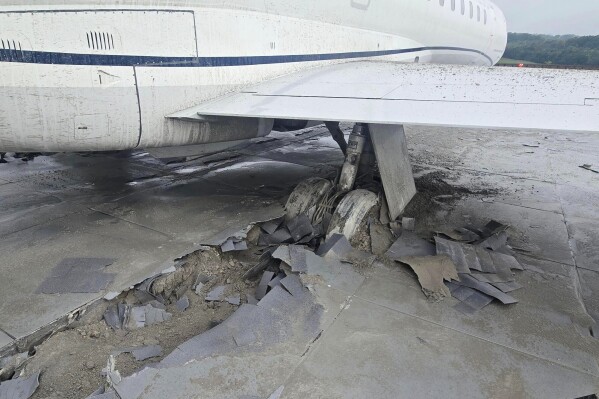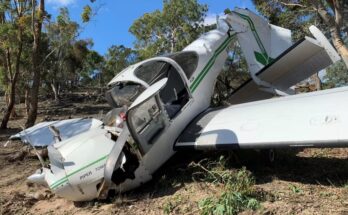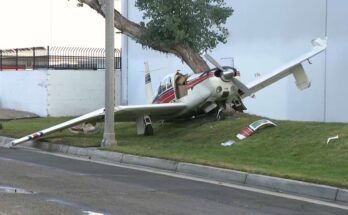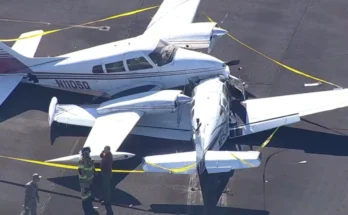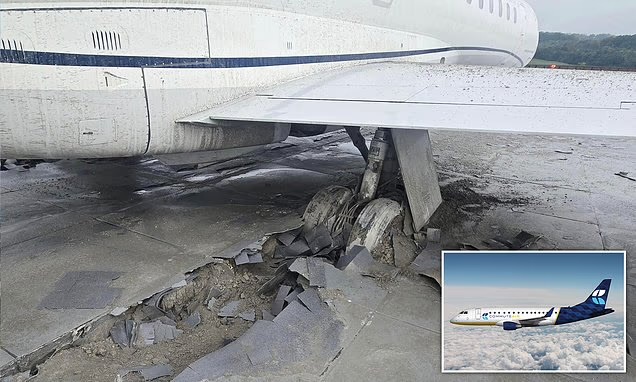
A passenger plane skidded off the runway at a Virginia airport during heavy rain before being saved by new technology designed to slow down out-of-control jets.
CommuteAir Flight 4339 had 50 passengers and three crew members on board when it attempted to land at Roanoke-Blacksburg Regional Airport around 9pm on Wednesday.
The plane skidded off a secondary runway after overshooting the designated touchdown zone amid heavy rain.
It was safely stopped by an engineered materials arresting system (EMAS) bed at the end of the runway.
EMAS is composed of lightweight, crushable cement blocks or silica, which help stop an overrunning aircraft traveling at approximately 80mph.
The safety area at the airport was upgraded last year and performed as intended, airport spokesperson Alexa Briehl told the Associated Press.
The flight was operating as United Express from Washington Dulles International Airport to Roanoke, CommuteAir Executive Vice President and Chief Financial Officer, Sean Frick, said.
The captain reported no injuries, Frick said.
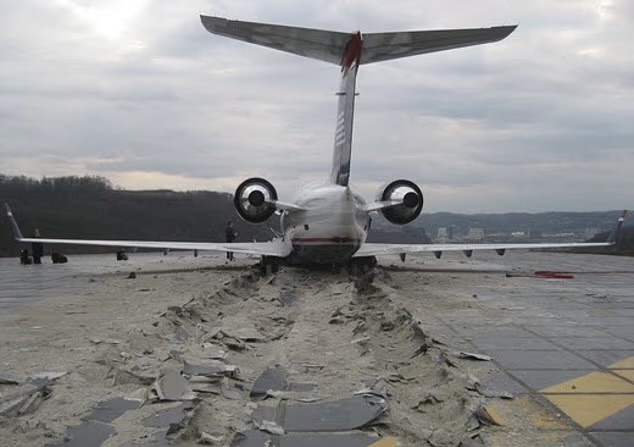
CommuteAir Flight 4339 had 50 passengers and three crew members on board when it attempted to land at Roanoke-Blacksburg Regional Airport.
The plane it skidded off a secondary runway after overshooting the designated touchdown zone amid heavy rain, but was safely stopped by an engineered materials arresting system (EMAS) bed at the end of the runway
Passengers aboard the Embraer 145 were bused to the terminal and law enforcement released them a little before midnight, officials said.
All runways at the airport were closed for a period of time.
One runway reopened after midnight to arriving and departing traffic, but the runway where the overrun occurred remained closed, the airport said.
The FAA said it will investigate.
Airport officials urged travelers to check with their airlines on Thursday morning since multiple flights were delayed.
Around 70 US airports use EMAS technology on at least 120 runways across the country, the FAA said.
Similar technology is also used in China and Spain.
It was developed in the 1990s after the FAA changed its runway safety rules and many airports couldn’t build a conventional runway runoff area.
